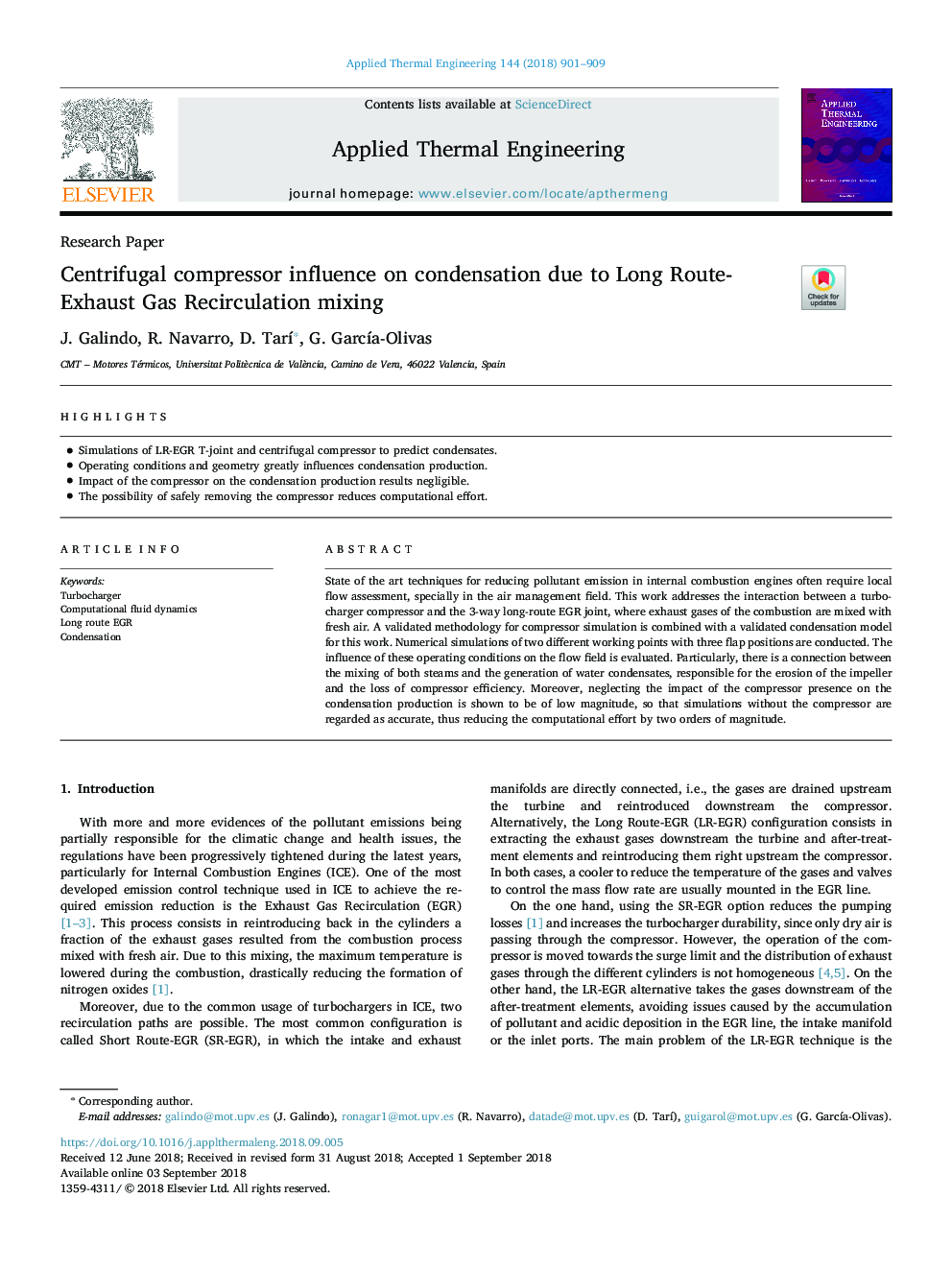| Article ID | Journal | Published Year | Pages | File Type |
|---|---|---|---|---|
| 10127362 | Applied Thermal Engineering | 2018 | 9 Pages |
Abstract
State of the art techniques for reducing pollutant emission in internal combustion engines often require local flow assessment, specially in the air management field. This work addresses the interaction between a turbocharger compressor and the 3-way long-route EGR joint, where exhaust gases of the combustion are mixed with fresh air. A validated methodology for compressor simulation is combined with a validated condensation model for this work. Numerical simulations of two different working points with three flap positions are conducted. The influence of these operating conditions on the flow field is evaluated. Particularly, there is a connection between the mixing of both steams and the generation of water condensates, responsible for the erosion of the impeller and the loss of compressor efficiency. Moreover, neglecting the impact of the compressor presence on the condensation production is shown to be of low magnitude, so that simulations without the compressor are regarded as accurate, thus reducing the computational effort by two orders of magnitude.
Related Topics
Physical Sciences and Engineering
Chemical Engineering
Fluid Flow and Transfer Processes
Authors
J. Galindo, R. Navarro, D. TarÃ, G. GarcÃa-Olivas,
